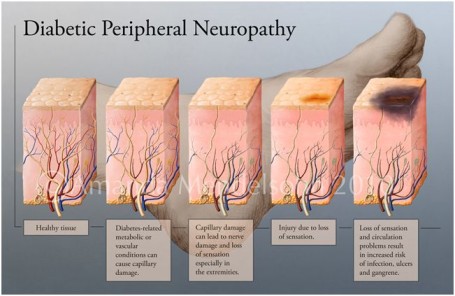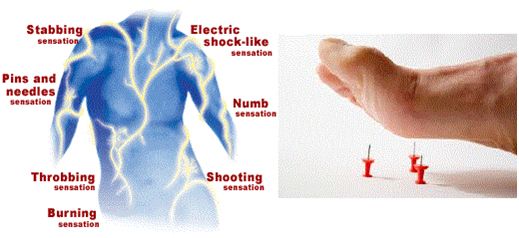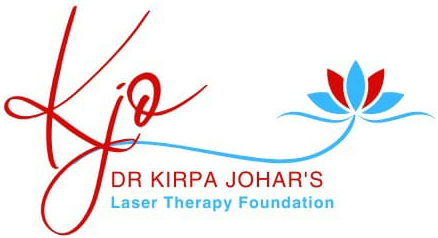Peripheral Neuropathy
The Name of the Condition Tells You a bit About What it is:
- Peripheral – Beyond (in this case, beyond the brain and the spinal cord)
- Neuro – Related to the nerves
- Pathy – Disease

The peripheral nerves make up an intricate network that connects the brain and spinal cord to the muscles, skin and internal organs.
Peripheral nerves come out of the spinal cord and are arranged along lines in the body called dermatomes. Typically, damage to a nerve will affect one or more dermatomes, which can be tracked to specific areas of the body. Damage to these nerves interrupts communication between the brain and other parts of the body and can impair muscle movement, prevent normal sensation in the arms and legs and cause pain.

Dermatomes
Peripheral neuropathy may affect one nerve (mononeuropathy), two or more nerves in different areas (multiple mononeuropathy) or many nerves (polyneuropathy).
Symptoms
Signs and symptoms of peripheral neuropathy may include
- Gradual onset of numbness and tingling in your feet or hands, which may spread upward into your legs and arms.
- Sharp, jabbing or burning pain.
- Extreme sensitivity to touch.
- Lack of coordination and falling.
- Muscle weakness or paralysis if motor nerves are affected.

Neuropathic pain
If autonomic nerves are affected, signs and symptoms may include:
- Heat intolerance and altered sweating
- Bowel, bladder or digestive problems
- Changes in blood pressure, causing dizziness or light-headedness
Causes of Peripheral Neuropathy
There are many factors that can cause peripheral neuropathies, so it is often difficult to pinpoint the origin.
Neuropathies occur by:
1. Acquired Neuropathies are caused by environmental factors such as toxins, trauma, illness, or infection. Known causes of acquired neuropathies include:
- Diabetes
- Several rare inherited diseases
- Alcoholism
- Poor nutrition or vitamin deficiency
- Certain kinds of cancer and chemotherapy used to treat them
- Kidney or thyroid disease
- Infections such as Lyme disease, shingles, or AIDS
2. Hereditary Neuropathies are not as common.
3. Idiopathic Neuropathies are from an unknown cause. As many as one-third of all neuropathies are classified in this way
Treatment
Treatment for peripheral neuropathy depends on the underlying cause and the type of symptoms you are experiencing.
Treatment goals are to manage the condition causing your neuropathy and to relieve symptoms.
1. Medications – Medications used to relieve peripheral neuropathy pain include:
- Pain relievers
- Anti-seizure medications
- Capsaicin
- Antidepressants.
2. Therapies – Various therapies and procedures may help ease the signs and symptoms of peripheral neuropathy.
- Transcutaneous electrical nerve stimulation (TENS).
- Plasma exchange and intravenous immune globulin.
- Physical therapy.
3. Surgery – If neuropathies caused by pressure on nerves, such as pressure from tumours, you may need surgery to reduce the pressure.
Low Level Laser Therapy Treatment for Neuropathy
Low Level Laser Therapy (LLLT) is the application of red and near infrared light over injuries to stimulate cellular repair.
The action of laser with respect to tissue regeneration and improved blood circulation were due to the following effects:
- Increased activity of some cells, such as leukocytes and phagocytes, and increased calcium in the cell cytoplas
- Interaction with cytochromes, stimulating redox activity in the cellular respiratory chain and resulting in cell activation
- Accelerated cell division and growth;
- Activation of protein and cytokine synthesis;
- Stimulation of production of adenosine triphosphate (ATP), which enhances the cells’ mitotic activity; and
- Relaxation of the vessel walls (vasodilatation) by photolysis of complexes such as nitric oxide
LLLT has emerged as an effective therapeutic modality in the treatment of painful neuropathy in that it is able to modify pain, microcirculation and some electrophysiological parameters of peripheral nerve function.
LLLT has no known side effects, is safe and effective.
